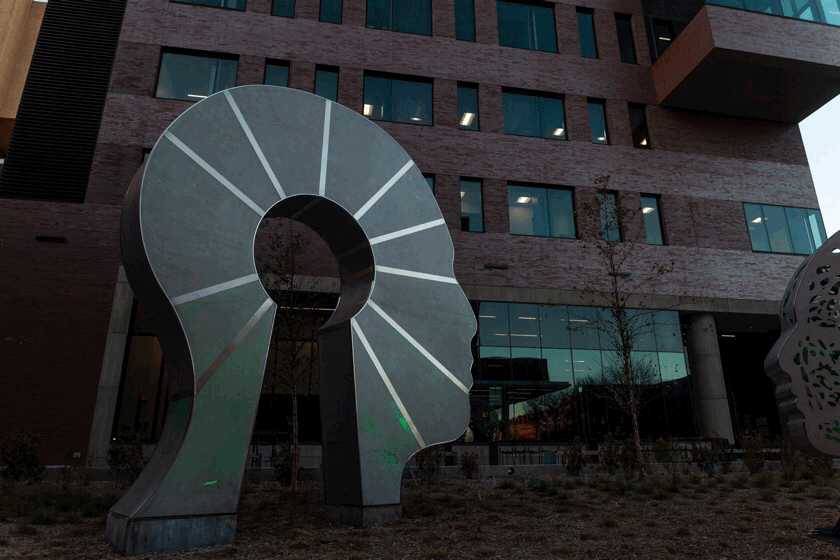The University of Minnesota put up two new sculptures outside of the Health Sciences Education Center (HSEC) over the summer, bringing a bit more beauty to campus.
The set of sculptures showcases the idea of dialogue, a cornerstone in both medicine and our everyday lives.
Barbara Grygutis, an Arizona-based sculptor, designed the sculptures, titled “Dialogue,” after spending several months talking to employees within the HSEC. She said their meetings always came back to the idea of conversation.
“I think a dialogue is very important. It is the most basic thing in terms of your health,” Grygutis said.
She said that there has always been a conversation between doctors and patients, doctors and medical students and doctors and, well, other doctors. She sees dialogue as a necessity within the medical field.
“We asked people from the academic health community to describe to Barbara what they will be doing in the [Health Sciences Education Center],” said Craig Amundsen, the University of Minnesota public art curator. “That gave Barbara insight into how she wanted to reflect that in her art.”
Grygutis attempts to make her pieces of art timeless. She said that while she began working on this project almost four years ago, she believes the message rings true today.
Grygutis sees her sculptures as simply human heads without a race, age or gender. She wants them to be seen as people and nothing more.
When asked about the sculptures, Chinar Singhal, a second-year masters of public health student, said, “It’s nice to see something different.”
As a health student, she spends a lot of time within HSEC and is appreciative that there’s a new piece of artwork to enjoy.
Grygutis said she loves creating public art pieces. “It’s very democratic. … Your audience is everybody,” she said.
Amundsen also shares a passion for public art. As a public art curator, he makes sure the University of Minnesota community is heavily involved with art projects. By including the community, he knows that the art will be relevant to campus.
“All of [the public art pieces] reflect the education, research activities or the geographic setting and history of the university,” Amundsen said.
Both Amundsen and Grygutis enjoy the fact that public art is a part of everyday life. People are able to see sculptures and appreciate art on a daily basis.
Public art is also more accessible as people don’t need to pay money, travel or spend hours inside in order to see art.
“In the age of COVID, [public art] is something you can go look at anytime since it’s outside,” Grygutis said. “The perspective of having a large audience is very important to me as a sculptor.”














